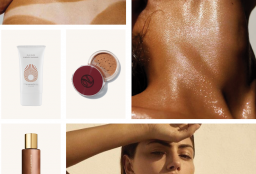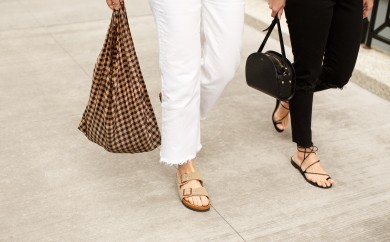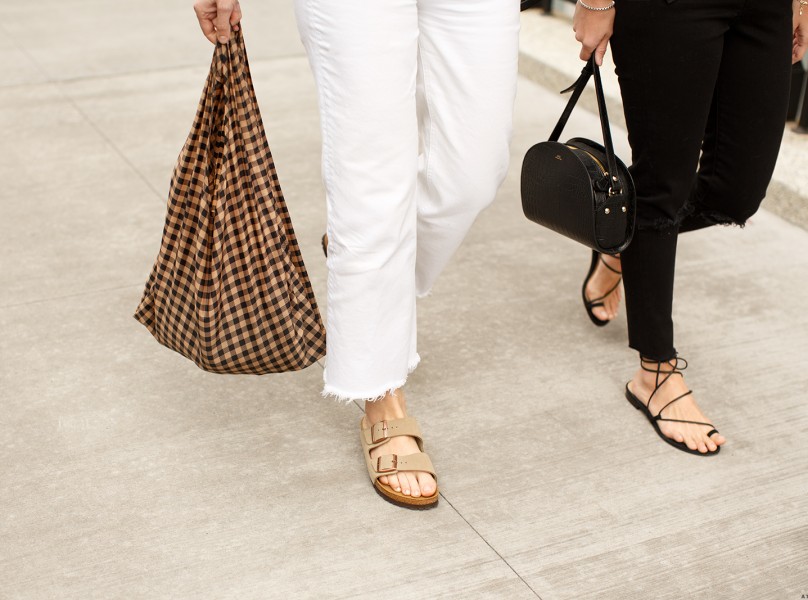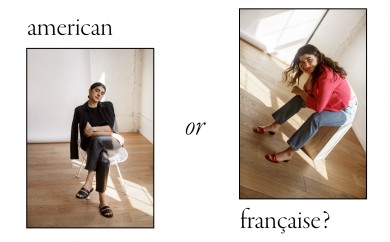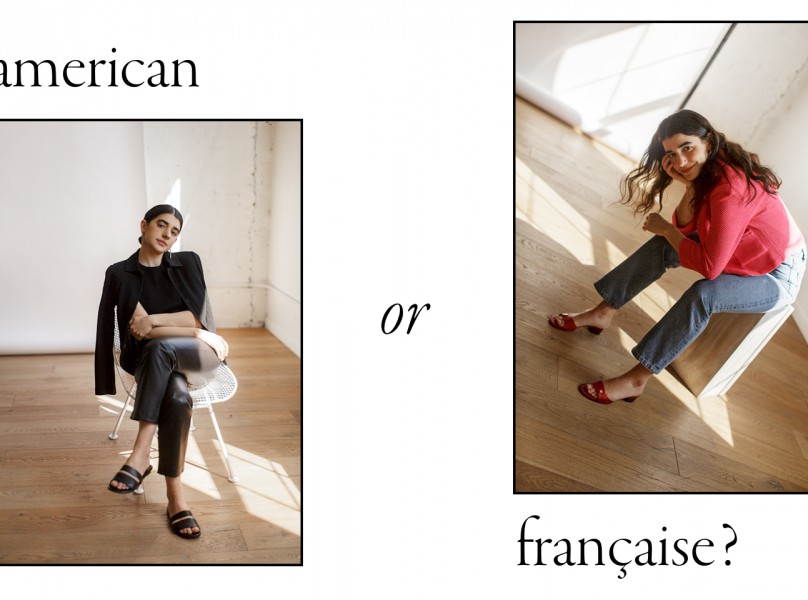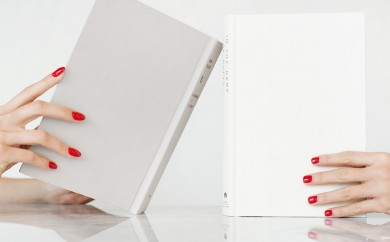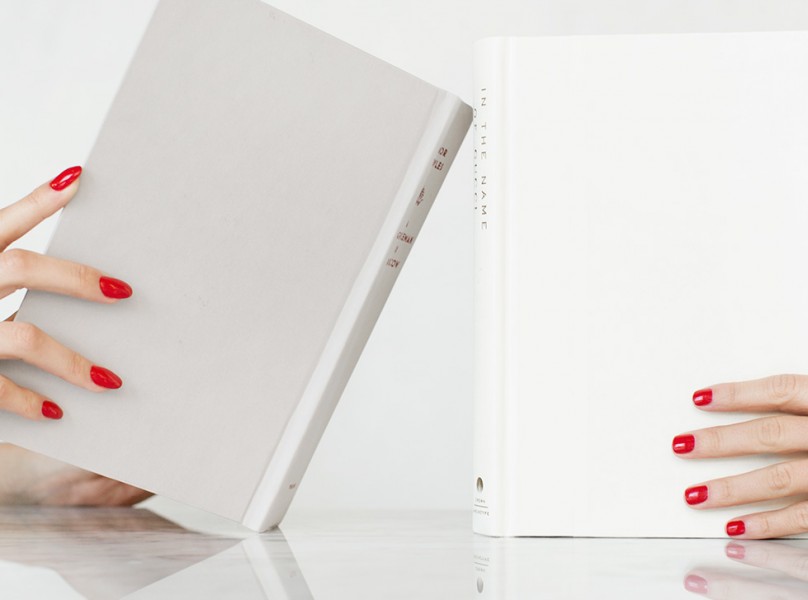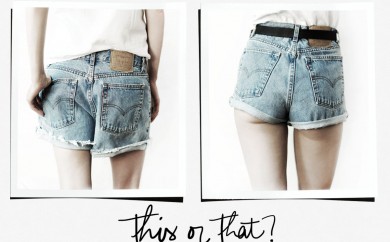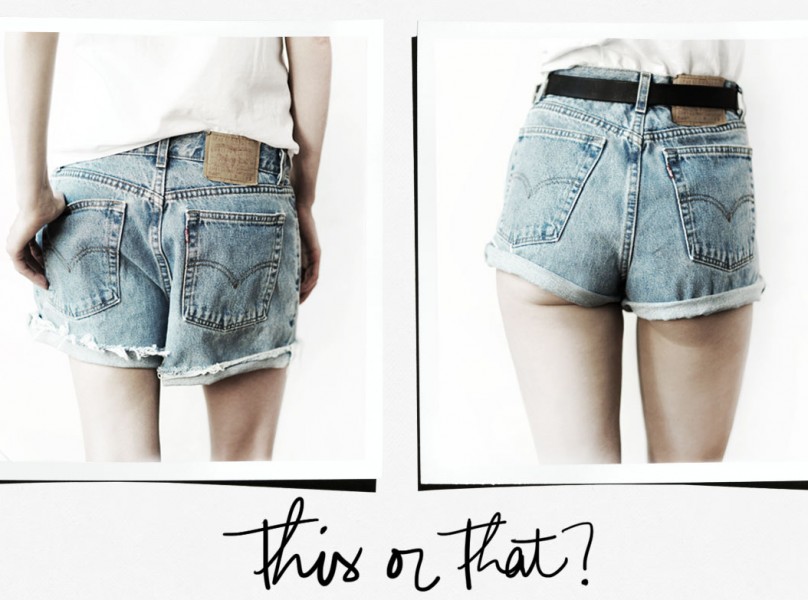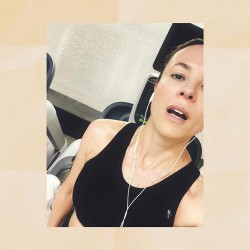Lasers, Peels, and Micro, Oh My!
3 years ago by
It feels like everyone I know seems to be talking about lasers, peels, microneedling and microdermabrasion. Everyone wants to get something or is about to get something or just had a little something done, which leaves me wondering – how do you know what you should get?
To find out, we interviewed Dr. Melissa Doft, a NYC-based double board-certified plastic surgeon, and Gabrielle Garritano, the founder and Chief Executive Officer of New York City spa, Ject, to weigh in and tell us what they know about lasers, peels, microneedling and microdermabrasion – and how to know which one is right for you.
I’m a believer in researching as much as possible about the procedure I’m going to get so I can come into the office informed. Your healthcare provider or skin professional will help you come up with a treatment plan based on your specific skin needs but there is no such thing as being too prepared. For instance, did you know that the first thing your aesthetician or physician should do is take the time to truly evaluate your skin? For instance, Garritano looks at the 3Ts when evaluating skin – Tone, Texture and Tightening. Fun fact – after age 30, we lose 1% of collagen per year, which can be thought of as the pillars that hold up a bridge, says Garritano, and as we age, the skin weakens and becomes less plump.
So what is a girl or guy to do? To start, know your treatments. We compare and contrast some of the most in-demand cosmetic skin procedures all in one spot and discuss everything from what each treatment is used for and how often to what kind of downtime are we talking about and how much does it cost? Of note, we discuss cost in this article to provide a framework but the cost of a treatment is dependent on many factors – the type of procedure used, the time and effort the treatment requires, geographic location, and the expertise and qualifications of the person performing the procedure.
Keep reading to learn more about each type of procedure and how in the world you should know which treatment to invest in.
Laser and Intense Pulse Light (IPL) Treatments
How does laser skin resurfacing work?
Laser skin resurfacing is all about using a targeted approach. The laser sends short, concentrated pulsating beams of light at irregular skin, which very precisely removes damaged skin one layer at a time. The laser beam removes the epidermis, or the outer layer of skin, and heats the dermis, also known as the underlying skin. This process stimulates the growth of new collagen fibers as the treated area heels, leading to smoother and firmer skin. According to Dr. Doft, lasers are “very controllable [in that] you know the exact depth you’re hitting for resurfacing because it’s preprogrammed.”
What are lasers best used for?
Lasers have a much broader array of uses compared to other technologies, says Dr. Doft.
Laser skin resurfacing can reduce facial wrinkles, blemishes and scars and improve skin ailments such as scars from acne or chickenpox, aged or sun-damaged skin, liver spots, and birthmarks. It can also improve fine lines or wrinkles around or under your eyes, forehead or mouth and improve your complexion if you have yellowish or grayish skin tones.
IPL uses light therapy to treat the skin and targets redness, hyperpigmentation, melasma and inflammation. IPL is a “great treatment for all different skin types but more Fitzpatrick one through four, lighter skin types that don’t have a lot of melanin,” says Garritano. IPL “addresses the tone of the skin, specifically reds and browns, superficial vessels we see as we age, hyperpigmentation from aging or sun exposure and overall skin clarity,” she adds.
A procedure such as VFR is “a heavy duty treatment that targets deeper into the skin,” says Garritano.
What are the different types of lasers?
There are two types of skin laser treatments used for cosmetic purposes – ablative and nonablative. Ablative lasers vaporize the top layers of damaged skin, while nonablative lasers work deeper in the skin without removing or damaging the top layers. Nonablative lasers generally do not have much downtime. Ablative lasers require a more difficult recovery process but they have the most dramatic results.
Different lasers are used for different issues and skin types, such as CO2 lasers, fractional lasers (Fraxel), Erbium lasers, and pulsed-dye lasers.
How much does it cost?
Per Dr. Doft, for minor laser procedures, the cost ranges between $500-$1000 but for treatments such as Fraxel, the cost goes up to between $1500-$2000.
At Ject, IPL costs $440 while VFR is $395.
How long is the procedure?
Laser is typically done on an outpatient basis and can take between 30 minutes and two hours.
Does it hurt?
Laser skin resurfacing can be painful so your doctor may numb the skin with local anesthetics and you may receive a sedative to help you relax. At certain times, lasers can be done while having other cosmetic procedures at the same time so your surgeon may use a general anesthetic. Your doctor may also provide pain medication after the procedure. Garritano notes that with IPL, there is very mild to no pain. VFR has mild to moderate pain during treatment as it is an ablative laser treatment, and then mild discomfort at home. It feels “warm like a sunburn,” she adds.
What is the downtime afterwards?
CO2 laser resurfacing takes up to two weeks to heal while erbium laser resurfacing takes one full week.
In most cases, it may feel like you have a mild sunburn with some redness and swelling. You may also experience itching or stinging for a few days after the procedure. Depending on the treatment, some people may have what looks like a severe sunburn with skin that feels raw with blistering. A yellow liquid may ooze from the treatment area and crust. It’s important to not scratch or pick at crusts because of the potential to form scarring. Usually after about five days to a week later, your skin will peel. Speak to your doctor about certain steps you should follow during your recovery so your skin can heal appropriately.
There is minimal downtime with IPL, says Garritano, but with a lot of sun exposure, “dark spots get a little darker and then peel and flake off after three to five days. With VFR, there is about 72 hours of downtime.
One thing to note – it’s possible that your skin may stay red or pink for up to several months after receiving a laser treatment and you may be extra sensitive to sunlight for up to a year. Be generous with your sunscreen and use it on a daily basis.
How long do the results last?
Some people may see an immediate difference in the treatment area. The skin will continue to improve for up to a year. In fact, the effects of lasers can last for many years! Although, with the normal aging process, wrinkles and expression lines will reoccur so laser resurfacing may be repeated as necessary.
For brown spots, pigmentation changes or veins, this may take between one and three treatments. For something like laser hair removal, there are many dependencies but typically about eight treatments are required.
In general, the results are permanent, says Garritano. “Once you get rid of sun spots, they’re gone but new issues come up. Skin maintenance is more of a marathon.”
Garritano notes that Fall/Winter is a nice time to get a series of treatments. For “someone with mild concerns, they would need three treatments, spaced four to six weeks apart, while someone with extensive sun damage may need six treatments, spaced closer together – about three to four weeks apart,” says Garritano.
Are there any cautionary measures to keep in mind?
“The skin is healing so we want to be gentle and not do anything to interrupt it,” says Garritano. This means no sun exposure, using gentle products, no hot yoga, and generally avoiding excessive heat for 48-72 hours, which includes no hot saunas or hot showers.
With laser treatments, Dr. Doft notes to avoid the sun afterwards and stay off Accutane for the six months prior to laser treatment. Avoid any laser treatments during pregnancy.
With certain procedures, it is so important to seek a board-certified plastic surgeon who is trained and qualified in facial plastic surgery. The American Society of Plastic Surgery has a list of questions you can use as a guide during your consultation so there are no surprises.
Peels
What is a peel?
A peel, also known as a chemical peel, “uses a chemical solution to smooth the texture and tone of your skin by removing the damaged outer layers,” according to the American Society of Plastic Surgeons. A chemical peel “stimulates collagen, helps with pigmentation, and increases radiance by taking off the top layer of skin and removing dead skin cells so the skin looks luminous,” says Dr. Doft.
What are peels best used for?
With age, sun exposure or acne, skin tone can become uneven, spotted, scarred or wrinkled. A chemical peel can improve the appearance of your skin and it’s reasonably priced. A chemical peel can help with rough skin and scaly patches, irregular skin pigmentation, fine lines and wrinkles, acne or acne scars, and sun damaged skin. A few things that chemical peels can’t do – remove deep scars, treat deep facial lines or wrinkles, or meaningfully tighten loose or sagging skin.
Garritano notes that you can start with “something mild with a higher pH and a larger molecule so it will sit on the surface of the skin and not go too deep for mild exfoliation.” These are typically light peels used for events that take dead skin cells off and create a glowy look, she adds.
What are the different types of peels?
Chemical peels vary by the type of chemical and technique used. There are three types of chemical peels, ranging in depth from superficial to medium to deep.
– Light chemical peel – typically associated with subtle improvements at first and then a healthy glow that increases with more treatments. Common agents used with light peels include combinations of alpha hydroxy acids and beta hydroxy acids, such as glycolic acid, lactic acid, salicylic acid and maleic acid. These treatments can be repeated regularly.
– Medium chemical peel – Noticeable smoother and fresher-looking skin. Agents used here include TCA (trichloroacetic acid), Jessner’s solution and glycolic acid.
– Deep chemical peel – Dramatic results but a longer recovery. The agent used here is phenol. A deeper peel can be done in the office or during surgery for another procedure. It involves peeling for a week, followed by “baby soft skin,” says Dr. Doft. There is a longer recoup time but more significant results, she adds. Depending upon the concentration, a TCA peel can also be considered a deep chemical peel.
A VI chemical peel is a moderate-depth peel that uses a blend of ingredients, which include salicylic acid, TCA and Phenol. This peel is “great for acne, brown spots, and aging,” notes Dr. Doft. With a VI peel, which happens to be one of Dr. Doft’s favorites, you can apply it on “day one, peel over the next two days, and you’re done by day three,” she adds.
How much does it cost?
Dr. Melissa Doft: Around $500
Ject: Light/Medium peel, for sensitive skin with minimal to no downtime, $160
Deep peel, for deep exfoliation and re-texturization with medium downtime, $220
Does it hurt?
This depends on the type of peel being used but with a light chemical peel, you may feel some mild stinging, some redness, skin flaking and irritation. After repeated treatments, these side effects typically lessen.
With a medium peel, you may feel some burning, stinging, redness, flaking of the skin and the treatment area may turn a whitish grey color. Your skin may turn red or brown in the days after the peel. The peeling process starts within 48 hours and lasts for a week. During the peeling process, keep your skin well moisturized.
With a deep peel, a strong chemical called phenol is used to penetrate down to the lower dermal layer of the skin. You may need a local anesthetic and a sedative to manage any discomfort. This type of peel typically involves a pretreatment for up to eight weeks to help prepare your skin for the peel and speed up the healing process. Phenol can pose a risk for people with heart disease so be sure to tell your surgeon about any pre-existing heart problems you may have. Deep chemical peels result in peeling, crusting, skin redness and discomfort for several days to weeks. Swelling will likely disappear in about two weeks but your skin may remain red for up to three months.
What is the downtime afterwards?
With a light peel, there is no downtime, a VI or medium strength peel involves 3 days of downtime, while a deep TCA peel takes about a week to heal , says Dr. Doft.
How long do the results last?
One treatment with a deep chemical peel can produce long-lasting results. Results can “last quite a while, especially with acne scarring and redness but [it’s important] to think of it as maintenance,” says Garritano. “After age 30, cell turnover decreases and dead skin cells sit on the surface of the skin. A 35-year-old has cells turning over a lot faster than someone who is 65 years old,” she adds.
Dr. Doft notes that for a light peel, results can last a month, for a VI peel, results can last a few months and a deep TCA peel can have results lasting a year.
A lighter peel can be done every 3-4 weeks, says Garritano. For someone with extensive damage, 3-6 peels may be needed, she adds.
Are there any cautionary measures to keep in mind?
Although a chemical peel is usually a safe procedure, all peels carry some risks. While rare, infection or scarring can occur with a chemical peel treatment. Some people with certain skin types can develop a temporary or permanent color change in the skin with either lightening or darkening. Avoid the sun and use sunblock for several months to protect the fresh new layer of skin. Dr. Doft notes to avoid Accutane as well.
You may not be a good candidate if you have a history of abnormal skin scarring, a naturally dark complexion or skin tone, use of certain acne treatments within the last year or have skin conditions or medications that make the skin more sensitive than normal. Chemical peels should not be done during pregnancy. Consult your doctor if you’re a good candidate for a chemical peel.
Microneedling
How does microneedling work?
Microneedling is the process of puncturing the skin with thin, sterilized needles to create tiny wounds, which leads to triggering the skin’s repair mechanisms and stimulating collagen production. Microneedling “turns over dead skin cells so skin looks glowy after treatment and induces new collagen production so [the skin] feels plumper after treatment,” says Garritano. Dr. Doft notes that microneedling creates micro injuries that stimulate collagen and elastin. “The body learns to repair itself,” she adds.
What is microneedling best used for?
Microneedling leads to an improvement in the appearance of large pores, stretch marks, scars, and fine lines and wrinkles. Garritano notes that microneedling is great for all Fitzpatrick skin types (a scientific skin classification system based on the amount of pigment your skin has and your skin’s reaction to sun exposure). It’s also considered a gold standard for acne scarring, she adds. Because microneedling does not involve heat, patients with a variety of skin tones can receive the treatment without worrying about pigmentation issues such as those with laser and light procedures.
According to the American Academy of Dermatologists, “when it comes to microneedling, not all treatments are created equal. At-home devices won’t provide the same effects as an in-office treatment from a board-certified dermatologist. In other words, stay clear of at-home microneedling devices that have shorter and duller needles that are not as effective and can lead to injury or infection.
The latest approach to microneedling is combining it with radiofrequency. This leads to a bigger impact than microneedling alone and offers a greater improvement with acne scars, helps with mild wrinkles and elicits skin tightening.
What are the different types of microneedling?
– Standard microneedling – controlled micro-trauma to the skin that stimulates the body’s natural healing process to initiate collagen production. Great for reducing fine lines and acne scarring. This treatment leads to a smoother and more vibrant appearance. This option is less expensive compared to other types of microneedling. It’s also technician-dependent and results vary with how well it’s done.
– Microneedling with PRP – Involves infusing your blood’s own Platelet Rich Plasma (PRP) and growth factors back into the skin to reinvigorate and rejuvenate cellular turnover. This treatment further stimulates collagen production for a quicker healing response. Dr. Doft notes that as the 6-12 needles go in and out of your skin, tiny channels are created, which can then be infused with PRP, hyaluronic acid, peptides or vitamins, effectively giving you more access to deeper levels of the skin.
– Microneedling with radiofrequency (RF) – “When the needles go in, a machine emits radiofrequency, which causes tightening of the dermal layer of the skin,” says Dr. Doft. This leads to “a decrease in fine lines and pore size, improves acne, tightens skin, and creates an overall glowier look,” she adds. This procedure is considered a “game changer,” says Dr. Doft and is less technician dependent as the depth of the 36 microneedles used can be controlled to 0.1mm and the amount of radiofrequency administered can be controlled.
How often should you get microneedling?
If using microneedling for acne treatments, you will see an improvement after one treatment but with severe acne scarring, results may take up to six treatments.
How much does it cost?
Ject:
Standard microneedling: $440
Microneedling with PRP: $900
Microneedling with RF: $900
Dr. Doft:
Standard microneedling: $500
Microneedling with RF (Vivace machine): $1000-$1500
Does it hurt?
Bleeding occurs during the procedure and mild skin redness can last from a few days to a week. Microneedling has “minimal to moderate” pain, says Garritano. Patients receive a numbing agent before the procedure.
After microneedling, the skin will be sensitive and susceptible to bacteria. You may also notice itching, dryness and some flaking. Avoid picking at the skin to let the skin heal itself. Some things to keep in mind – avoid exercise for 24 hours post treatment, do not touch the face or apply makeup with used brushes, and avoid direct sunlight, retinoids or active chemical exfoliants for the first week after treatment.
What is the downtime afterwards?
The downtime with standard microneedling is about 48 hours. Microneedling with RF has a quicker healing process.
How long do the results last?
Microneedling is offered as a set of three, spaced out about one month apart with booster sessions every six months, says Dr. Doft.
Are there any cautionary measures to keep in mind?
Patients with inflammation or infections, which include active acne or cold sores, should not receive microneedling. After microneedling, patients should protect their skin from the sun. In general, avoid using harsh products and topical treatments such as retinol before the procedure.
Microdermabrasions
What is microdermabrasion?
Microdermabrasion is a minimally invasive procedure that uses an applicator with an abrasive surface to gently sand your skin to remove the thicker, uneven outer layer. This is used to treat light scarring, discoloration, stretch marks and sun damage. Microdermabrasion helps to thicken your collagen, which is responsible for making the skin appear taut and smooth, leading to a younger looking complexion.
This is essentially a very fine sand blaster that uses microparticles to remove the top layer of your skin and stimulate new skin growth.
What is microdermabrasion best used for?
Microdermabrasion can improve hyperpigmentation, exfoliate your skin to reveal a refreshed appearance, improve age spots and blackheads, reduce fine lines and wrinkles, helps with sun damage, reduce or eliminate enlarged pores, and treat acne and acne scars. Essentially, it offers “mild exfoliation, cleans up the skin [and has] no downtime,” says Garritano. This is a great procedure to do “before other treatments to prep the skin and get a deeper treatment [and is] considered milder than microneedling,” she adds. Microdermabrasion allows products to penetrate the skin more easily.
Both Dr. Doft and Garritano note that microdermabrasion can be performed by an aesthetician and is typically added on to a facial. Microdermabrasion is great for “making the skin look more radiant and polished, [helps with] small bumps from scars and helps blend and smooth everything out,” says Dr. Doft. This treatment works on the surface of the skin and helps with texture, she adds.
What are the different types of microdermabrasion?
There are two types of treatments:
– Crystal: A hand-held device that sprays fine crystals across your skin while an attached vacuum suctions these exfoliating crystals back into the machine, along with your dead or loosened skin. The types of crystals used include aluminum oxide and sodium bicarbonate.
– Diamond tip: Involves moving a diamond-tip wand across your skin to gently exfoliate and simultaneously suction them off.
Each treatment lasts about 30 minutes.
How much does it cost?
The average cost of microdermabrasion is $167, according to 2020 statistics from the American Society of Plastic Surgeons.
Does it hurt?
A light microdermabrasion procedure performed during a facial has mild discomfort. You may experience redness and swelling but any discomfort usually subsides within a few hours. During microdermabrasion, you may feel a mild scratching. After the procedure, skin can be flaky and dry. There can be some bruising from the suction that can last several days.
For deeper microdermabrasion performed during surgery, Dr. Doft says that local or general anesthesia is performed. The pain level of this procedure depends on the depth.
What is the downtime afterwards?
There is no downtime or recovery period for microdermabrasion performed with a facial. For deeper microdermabrasion performed during surgery, downtime can range from a week to 10 days, says Dr. Doft.
How long do the results last?
Depending on your skin damage and the number of treatments you receive with microdermabrasion, results last about 3-4 weeks, says Garritano. Typically, patients receive two microdermabrasion treatments per month initially and then one per month as maintenance.
Dr. Doft notes that deeper microdermabrasion is sometimes done during a facelift for lines around the face. This involves going deeper into the skin and takes longer to recover.
Are there any cautionary measures to keep in mind?
After the procedure, your skin will be more sensitive to sun exposure, which can last weeks after the treatment. Use sunscreen immediately after a microdermabrasion session and often! Avoid using topical acne medications for at least 24 hours after the procedure.
References:
American Society of Plastic Surgeons. Laser skin resurfacing.
Preissig, J., Hamilton, K., & Markus, R. (2012). Current Laser Resurfacing Technologies: A Review that Delves Beneath the Surface. Seminars in plastic surgery, 26(3), 109–116. https://doi.org/10.1055/s-0032-1329413
American Society of Plastic Surgeons. Chemical peel.
Doft Plastic Surgery. Chemical Peels.
American Academy of Dermatology Association. Microneedling.
American Society for Dermatologic Surgery. Microneedling.
Ject NYC. Microneedling.
American Society of Plastic Surgeons. Microdermabrasion.
American Academy of Dermatologic Association. Microdermabrasion.
Ject NYC. Medical Grade Facial.























